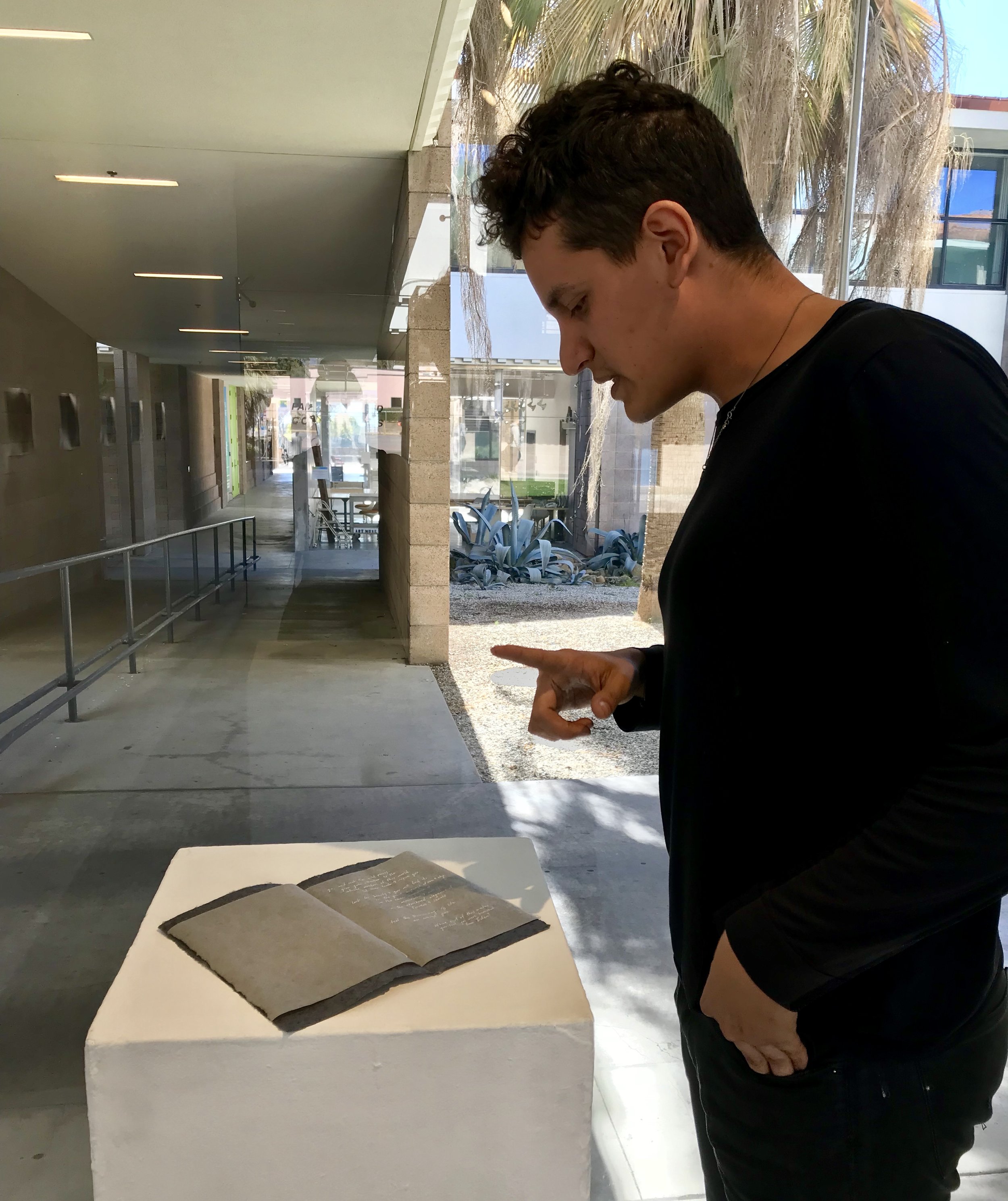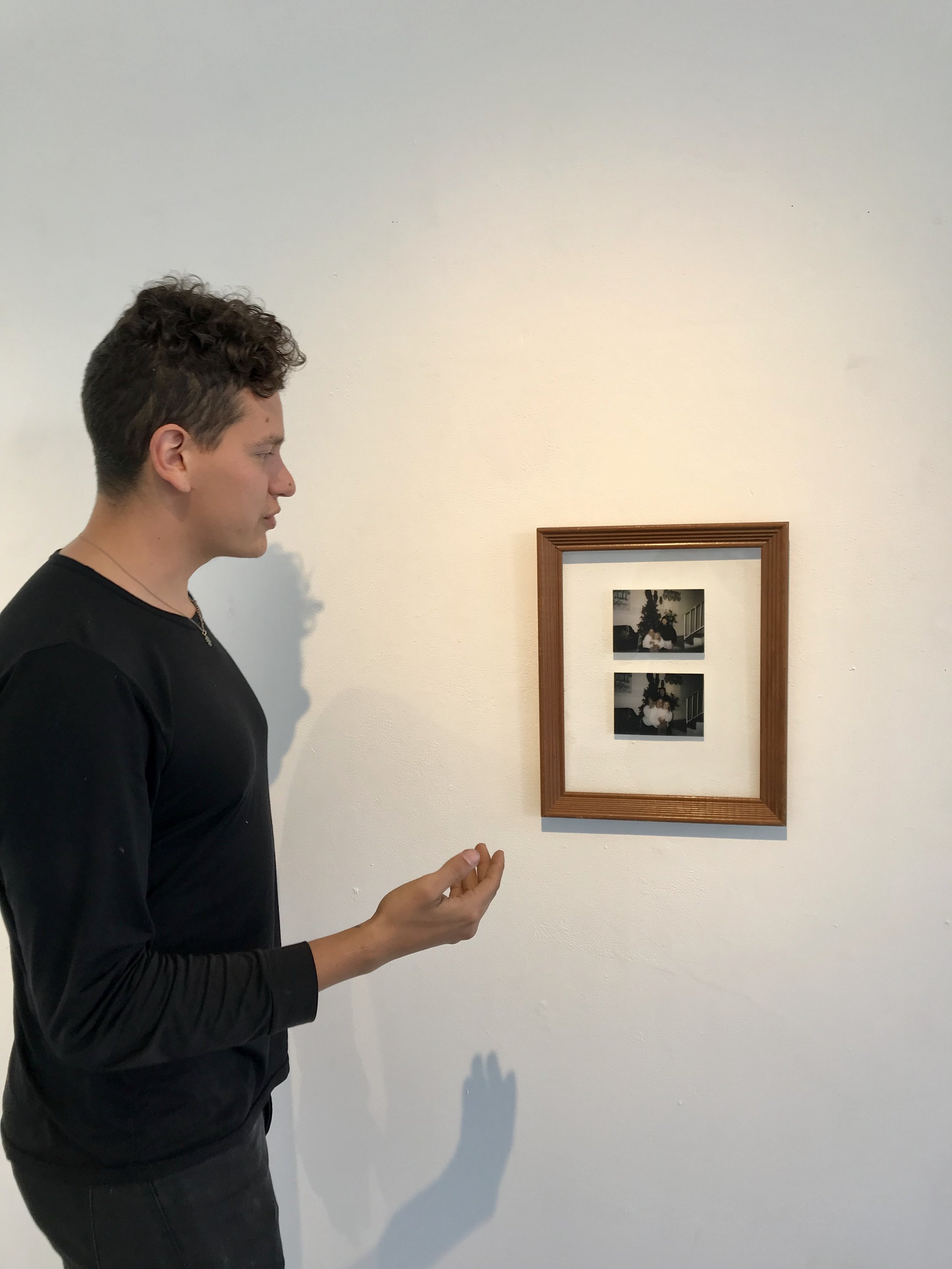Robert Brian Huerta Rocking the Glassbox
By Cassandra Day
Robert Brian Huerta, a Masters of Fine Arts student at UCSB, talks about his work.
Robert Brian Huerta places himself in a long line of artists who are considered rebels in their own generation as they explore new directions in their work.
At his recent Glassbox exhibition, UC Santa Barbara’s student-run exhibition space, Huerta invited several punk rock groups to perform within the space. He titled the exhibition Tresspassing: punks in the glassbox.
At the event, Huerta encouraged a clash by having conventional art pieces surround a group of people drinking, singing, and dancing to a live, black-clad punk band.
Behind the band and their instruments in red block lettering it said, “you are trespassing do not touch the art.” Surrounding the audience were paintings in bright oranges, purples, blues, and greens, which attendees were careful not to lean on or bump into as they danced. Beer cans and wine bottles lay on the floor.
The Glassbox show was Huerta’s attempt to take modern art in a new direction by bringing two parts of the art world together, the establishment and the new generation. “I am hoping that we can work together to fill these spaces, that feel so suffocating in many ways, and open them up,” he said. “I want to turn them on their head.”
Huerta, a Masters of Fine Arts student at UCSB, curates events across Santa Barbara that focus on thinking about art in a new light.
His inspiration for Tresspassing: punks in the glassbox came from what he sees as the current collision of traditional and new artistic styles. “Conventional art, new genres, and social practices are butting head to head,” he explained.
He cited a friend who is a chemistry professor as an example. “I can see that friction within one person, where they are hard core punk, they love death metal, they love being in the pit, getting socked and socking someone else back, getting pushed onto the ground and getting picked up by the same people that pushed them down, jumping around like crazy, and then they go into the lab and synthesize some new compound,” he said.
“Academia and any institution would benefit from …embracing the two worlds and have them be celebrated and held space for, and I hope that is what we are doing in the Glassbox.”
Huerta has become increasingly curious about the way people perceive musicians and interact with it within an art space. “What if the musicians were the paintings on the wall, or if we thought of them in the same way?” Huerta asks. “There is something beautiful about the way that the body becomes the canvas when musicians dress up, and they put on makeup, and put on clothes that are very specific. Their instruments are not just the brushes, they are pieces of art themselves. It becomes this whole aesthetic.”
Perhaps even more important to Huerta is how performers interact with the audience. “The performers get to perform, and the audience gets to release something through the dancing, the listening, or the talking. Sometimes they are there to be with others, or they are there to be alone. But the scene creates an opportunity for all of us.”
In his thesis coming up in May, instead of punk, Huerta is using a dance and music style known as folklórico to bring a more personal influence into his work. “Folklórico is this elegant dance that is prevalent in Mexico,” Huerta said. “One of the topics that I work with is identity and identity politics. A first generation son of an immigrant is the narrative I am channeling,” he said.
The folkloric music and dancers in his thesis refer to his own personal narrative. “What is the texture of that narrative?” is a question Huerta is trying to answer through the exhibit. “One of things that I remember, and that I feel like multiple people from that culture can see and feel something immediately for, is folklórico.”
Huerta says he has received critiques from more traditional artists concerning his style of art. “Folks that have a lot at stake in the other model of the art world do not want to see this kind of stuff happening because it almost threatens the validity of what they have been doing,” he said.
“You get a lot of push back about this not being art. I feel like this is the future of art, things opening up and these two worlds intersecting. All of society is going through this shift, and if we fail as artists to recognize that and go for more non conventional ways of doing things, then we are not producing culture.”
He especially hopes to inspire creativity in others. “It is also not like school will teach you to become an artist. It is a process of learning, and it is a capacity that we all have,” he said. “They see themselves as outside of it, when art is life."
Cassandra Day is a third year UC Santa Barbara student, majoring in English.





